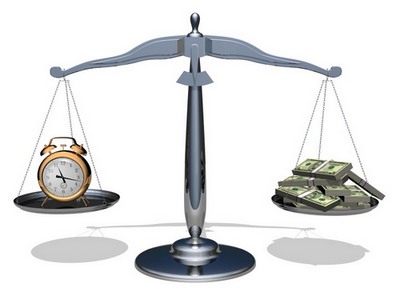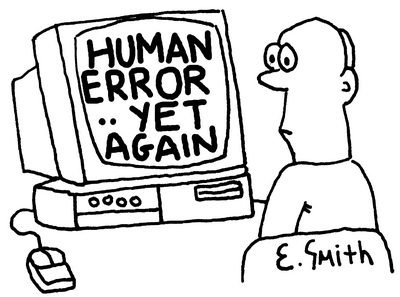How much does it cost not to implement MRM?
Good Friday, Habr! Always glad to see our blog readers!
When it comes to introducing a new IT solution in an enterprise, one can describe the capabilities of the proposed system for a long time, in detail and colorfully, how it is convenient to use it and how it “improves efficiency” and “contributes to the integration of processes”. If you do it really well, the client to whom you are trying to sell this decision will listen to you, and perhaps even with interest. But then he will inevitably ask the same question. No, not even "how much does it cost?" And “why is it worth SO MUCH and why do we have to pay for it at all”?
The question is relevant for any IT solutions aimed at optimizing business processes - whether it be electronic document management systems, CRM, ERP and ... what else they managed to invent. And it may be interesting to find out how they answer it in BrandMaker.
')

For MRM solutions, to which BrandMaker belongs, it is doubly difficult to answer this question, because evaluation of the effectiveness of marketing work is in itself a very trivial task. And here you also need to understand how the introduction of the new system will affect this efficiency.
But, nevertheless - you can answer. And for this you need to look at the situation a bit from the other side. And how much does it cost NOT to implement MRM? How much does a company cost “old-fashioned” work and ignoring modern opportunities for automating business processes?
In one of the past articles - about what really can provide specialized software for marketing - partly formulated areas of savings. There are at least two or three “iron” arguments that can be cited when asked about the direct measurable economic effect of implementation.
First is the time. Any specialized software contributes to the fact that typical work operations are performed significantly faster. Well, otherwise why is it even needed?

But there is a nuance. If you show the system to ordinary performers and prove that, for example, with a single repository of media objects, they will spend on searching and transferring the required file not for half an hour, but in a matter of seconds - they will appreciate it. But not their leader. The manager, and especially the owner, needs to be told not about how the system will make his subordinates easier, but about the direct benefit. And therefore, saving time you need to immediately transfer from minutes and hours to rubles.
If we talk about BrandMaker, then, based on the experience of implementation, the system allows you to save up to 30% of the working time of marketing staff by automating and speeding up typical tasks. The exact figures for each client, of course, are different, and they can be more or less accurately assessed after an audit of business processes immediately prior to the implementation of the system. But at the beginning of negotiations it is better to have at least approximate figures than none at all.
So: if you save up to 30% of your employees ' time , then this is, in fact, 30% of the salary fund of marketing departments. This is the time they are losing from month to month for all sorts of minor unproductive operations related to sending files by e-mail, ordering and agreeing on minor alterations of advertising layouts, monitoring the execution of small orders, compiling reports for management, and so on. According to some estimates, this entire purely administrative routine takes up to 2/3 of a marketer’s working day. And for the remaining third, you need to manage to do something for which, in fact, marketers are paid - to develop ways to promote products to the market.
Secondly, it is the reduction of risks associated with the influence of the "human factor".

These risks are always there, in any field of activity. In marketing, these are, for example, errors in advertising layouts, due to which the circulation has to be reprinted. The price of the error, of course, is also different, and depends on the scale of the client. It's one thing to screw up a batch of business cards of 500 copies, and quite another, for example, to arrange 100,000 booklets for printing with an error in the main telephone number. And, of course, you should never talk about a 100% guarantee of the exclusion of the “human factor”, because in any case there is a risk of misuse of the system or intentional violation.
Thirdly, it is savings on outsourcing services . In the case of BrandMaker (if Web-to-Print technologies are used), this is saving on small orders to the designer — in layout of corporate business cards and badges, for example, or adjusting texts on ready-made layouts.
Well, talking about these three things that are associated with specific economic effects, you can already move on the topic ofspace ships, plowing the effect of synergy, process integration, gain control, etc., and so on. These are also very important things that have an economic effect as a result, but it is much more difficult to calculate it in advance. So, it is more difficult to convince the client that this effect will be.
BrandMaker Russia www.brandmaker.com
When it comes to introducing a new IT solution in an enterprise, one can describe the capabilities of the proposed system for a long time, in detail and colorfully, how it is convenient to use it and how it “improves efficiency” and “contributes to the integration of processes”. If you do it really well, the client to whom you are trying to sell this decision will listen to you, and perhaps even with interest. But then he will inevitably ask the same question. No, not even "how much does it cost?" And “why is it worth SO MUCH and why do we have to pay for it at all”?
The question is relevant for any IT solutions aimed at optimizing business processes - whether it be electronic document management systems, CRM, ERP and ... what else they managed to invent. And it may be interesting to find out how they answer it in BrandMaker.
')

For MRM solutions, to which BrandMaker belongs, it is doubly difficult to answer this question, because evaluation of the effectiveness of marketing work is in itself a very trivial task. And here you also need to understand how the introduction of the new system will affect this efficiency.
But, nevertheless - you can answer. And for this you need to look at the situation a bit from the other side. And how much does it cost NOT to implement MRM? How much does a company cost “old-fashioned” work and ignoring modern opportunities for automating business processes?
In one of the past articles - about what really can provide specialized software for marketing - partly formulated areas of savings. There are at least two or three “iron” arguments that can be cited when asked about the direct measurable economic effect of implementation.
First is the time. Any specialized software contributes to the fact that typical work operations are performed significantly faster. Well, otherwise why is it even needed?

But there is a nuance. If you show the system to ordinary performers and prove that, for example, with a single repository of media objects, they will spend on searching and transferring the required file not for half an hour, but in a matter of seconds - they will appreciate it. But not their leader. The manager, and especially the owner, needs to be told not about how the system will make his subordinates easier, but about the direct benefit. And therefore, saving time you need to immediately transfer from minutes and hours to rubles.
If we talk about BrandMaker, then, based on the experience of implementation, the system allows you to save up to 30% of the working time of marketing staff by automating and speeding up typical tasks. The exact figures for each client, of course, are different, and they can be more or less accurately assessed after an audit of business processes immediately prior to the implementation of the system. But at the beginning of negotiations it is better to have at least approximate figures than none at all.
So: if you save up to 30% of your employees ' time , then this is, in fact, 30% of the salary fund of marketing departments. This is the time they are losing from month to month for all sorts of minor unproductive operations related to sending files by e-mail, ordering and agreeing on minor alterations of advertising layouts, monitoring the execution of small orders, compiling reports for management, and so on. According to some estimates, this entire purely administrative routine takes up to 2/3 of a marketer’s working day. And for the remaining third, you need to manage to do something for which, in fact, marketers are paid - to develop ways to promote products to the market.
Secondly, it is the reduction of risks associated with the influence of the "human factor".

These risks are always there, in any field of activity. In marketing, these are, for example, errors in advertising layouts, due to which the circulation has to be reprinted. The price of the error, of course, is also different, and depends on the scale of the client. It's one thing to screw up a batch of business cards of 500 copies, and quite another, for example, to arrange 100,000 booklets for printing with an error in the main telephone number. And, of course, you should never talk about a 100% guarantee of the exclusion of the “human factor”, because in any case there is a risk of misuse of the system or intentional violation.
Thirdly, it is savings on outsourcing services . In the case of BrandMaker (if Web-to-Print technologies are used), this is saving on small orders to the designer — in layout of corporate business cards and badges, for example, or adjusting texts on ready-made layouts.
Well, talking about these three things that are associated with specific economic effects, you can already move on the topic of
BrandMaker Russia www.brandmaker.com
Source: https://habr.com/ru/post/133364/
All Articles